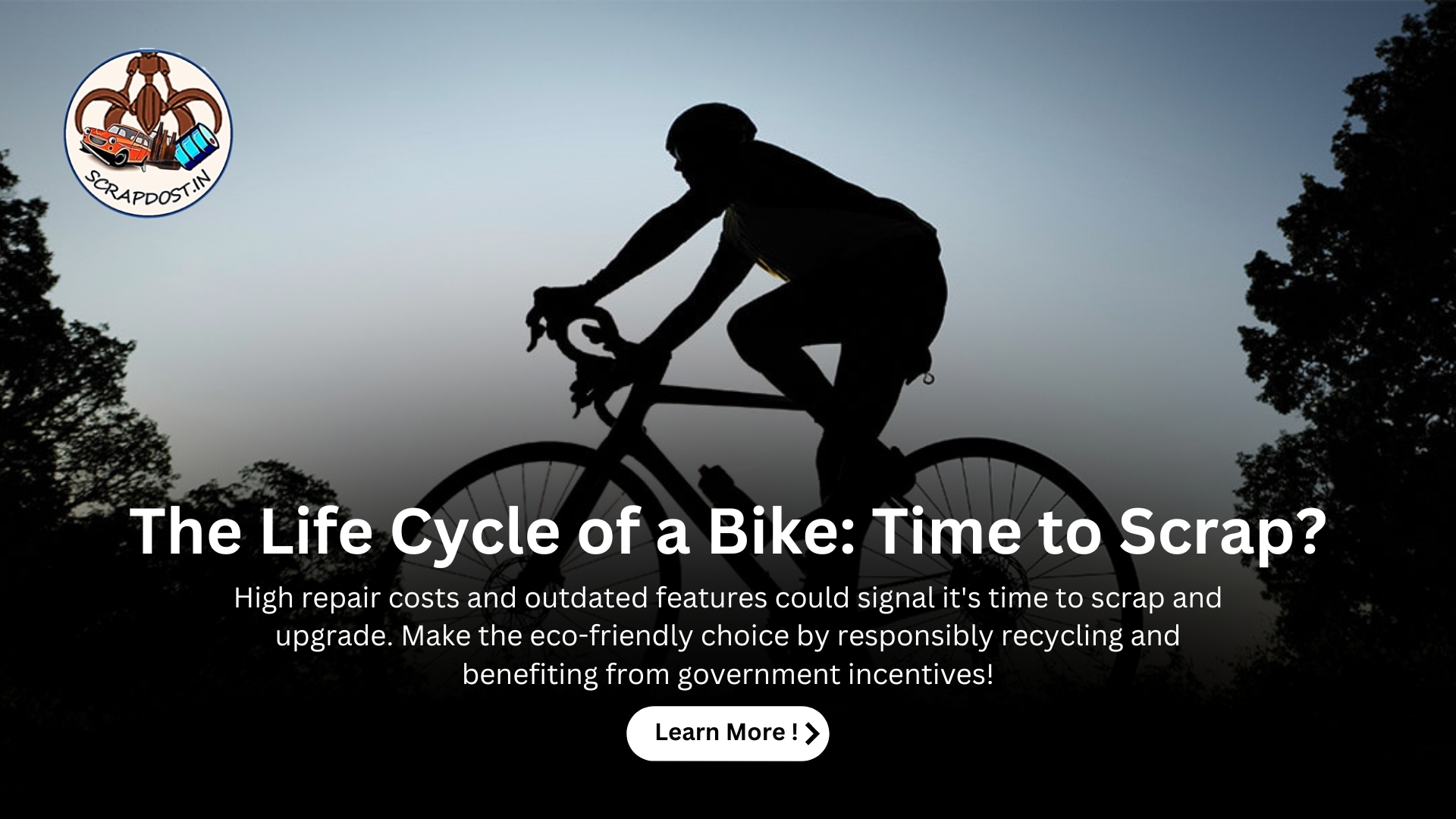Bikes like all other vehicles also have a life cycle that every owner should know. There is always a right time to let go of your bike to avoid incidences of accidents and to allow you to save money for a better bike. First of all, basic care during its use helps prolong the use of the bike. But of course, there is a time when even the most carefully safeguarded bicycles are irreparable. This guide explores the stages of a bike’s life cycle and helps you determine when it might be time to think about scrapping your two-wheeler. By following this checklist, you can make knowledgeable decisions about your bike’s future.

When using your bike during the early stages, it’s usually in its best shape, and, with proper attention, your bike will last longer than you think. First, it is time to develop good maintenance habits, such as regular chain cleaning, tire pressure, and brake checks. Besides, it is the most appropriate time to look for possible manufacturing imperfections or any signs of early wearing down of the structures. Maintenance should be done frequently to avoid extensive damage that will make the bike perform efficiently and prolong its life cycle. But with time, the bike is bound to wear, and this defines the second stage of the bike’s life cycle.
By the time your bike reaches middle age, you will observe some problems emerging regularly on your bike. That is, the functional parts of the car, such as the chain, gears, and tires, may be required more often for replacement. That is why performing mid-life maintenance on your bike will help prevent huge issues and keep the bike in the right condition. Further, activities such as inspecting for rust, greasing or replacing any components with PDMA, and replacing worn-out parts form part of this phase. It is advisable to always assess how much you spend in the cycle on repairs compared to the mid-life bike value. Therefore, this paper aims to address the knowledge gap around understanding the factors that are overcome by the costs of longevity.
Finally, at a certain point, significant amounts of wear become evident. The many problems that invariably accompany heavily worn clothing coupled with the signs of early wear make these features manifest to signal the need for replacement. For instance, your vehicle may develop cyclic problems, including worn-out brakes, cracked frames, or inefficient gears. Besides, if several gears require frequent replacement, it is a sign that a bike is getting old. In essence, it becomes the duty of the owner to determine whether it is advisable to pay a certain amount of money to repair or scrap your bike. If you fail to notice these signs, you might end up in an environment that is dangerous for yourself and other users of the road.
However, it is still possible that even after this general maintenance, the performance quality of the bike deteriorates slowly. Nevertheless, reduced rates of operation may also show up in the form of slow speeds, more difficulty to perform, or wrong stopping mechanisms. This not only lowers the fun of riding but also the impacts on the environment are also felt. Thus, cycling an improperly designed bike is potentially worse for the environment if you resort to a second car. If performance seriously declines now, it is time to consider scrapping the two-wheeler. It is important to determine when performance is poor in order not to spend time and money on repairs that will not bring the bike back to full functionality.
This calls for a cost-benefit analysis when the evaluation of which bike to repair or scrap is being determined. However, if the cost of repairs is more than the worth of the bike, then it’s high time to do so. Moreover, old bicycles do not possess the current engineering solutions that enhance the performance of bicycles, so repairing old bicycles may appear pointless. If the vehicle is always breaking down, the mechanic’s bills stack up and erase the incentive of owning a bike. Therefore, it ensures that you make the right decision depending on the worth of the bicycle and the costs of repairing the bike. Finally, this leads to the final step: scrapping or recycling.
If your bike is gathering dust, it is beyond economical repair or you can’t add any more value through enhancement; it is best to consider scrapping. First of all, scrapping is an effective decision that saves people from negative impacts on the environment and from creating unnecessary rubbish. Additionally, it also means that recycling is achieved, which does not add a bad reputation to the carbon footprint incurred in manufacturing new bikes, which makes scrapping good news to the owner and the planet. Some of the two-wheeler scrapping companies that exist today, such as Scrapdost, make it possible to scrap bikes and get concerned parts recycled or disposed of adequately, affecting the environment negatively.
Based on the lifecycle of a bike, there are certain indicators of when to repair and when to replace the bike. In conclusion, scrap is still a realistic decision by preventing further damage to the environment and providing protection from constant repair expenses. It is also equally important to select an appropriate scrapping company. Finally, Scrapdost provides the best scrapping services for your bike, following scrapping procedures and reusing or recycling all your bike’s parts. Scrapdost is a great company that will help you make the correct choice for your bike when it is time to say goodbye.
© 2025 ScrapDost